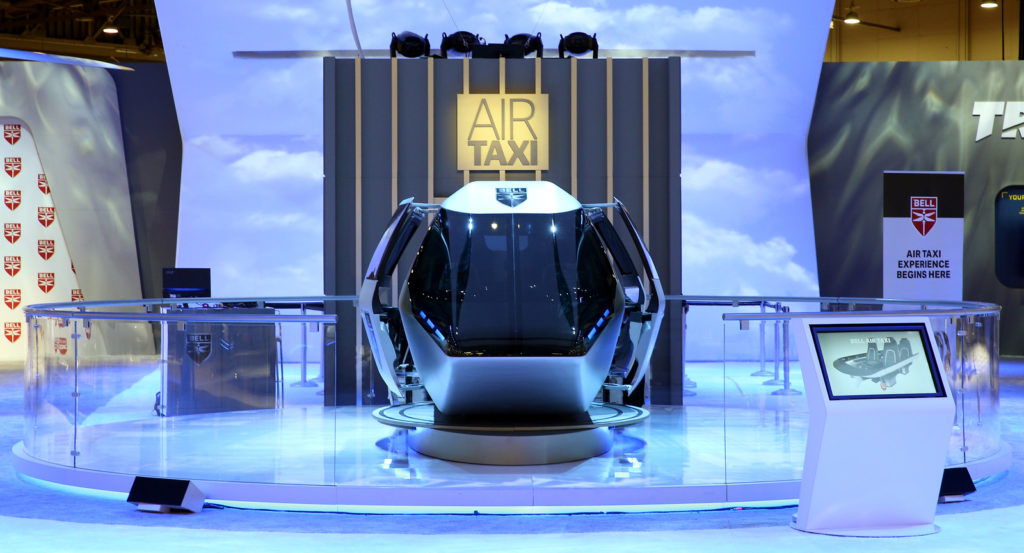Estimated reading time 6 minutes, 5 seconds.
In the not too distant future of the 2030s, a “hyperloop” could be whisking passengers from Toronto to Montreal via Ottawa in under 40 minutes.
The technology, championed by Elon Musk of Tesla and SpaceX and already in the early stages of development, uses an electric propulsion system to move magnetically levitated pods through low-pressure tubes at a velocity approaching the speed of sound.

Well before then, however, Airbus, Bell, Boeing and Uber, among others, may be successfully ferrying passengers and cargo within cities in urban air taxis. Prototypes such as Airbus’s single-passenger vertical takeoff and landing Vahana project have already completed test flights, and larger concept trials in Dallas and Los Angeles are planned by Uber for the early 2020s.
While urban air mobility projects may finally bring to fruition the vision prophesied by The Jetsons, there remain a number of critical issues that will have to be addressed before urban air transport takes flight over city streets.
Beyond the technical challenges of energy storage and management within the aircraft and sense and avoid in cluttered airspace, issues such as airworthiness standards, air traffic management, and supporting infrastructure must be resolved. And some fear air taxis will be ready long before the regulators.
The broad vision for urban air mobility is on a scale with automotive manufacturing, Thomas Prevot, director of airspace systems for Uber, told the Aerospace Innovation Forum in April, a biannual conference host by Aero Montreal and supported by the National Research Council of Canada. “We don’t want this to be a little niche market. It’s supposed to be transportation for everyone in the long run.”
In a discussion with Michael Thacker, executive vice president of technology and innovation for Bell, Prevot described a transportation system in which “vehicles are filled with as many passengers as possible and run at very high utilization factors and high throughput.”
However, for the Federal Aviation Authority (FAA) or Transport Canada to certify the airworthiness of the airframe, electric hybrid propulsion system and remotely piloted operations, new regulations will have to be written.
Thacker noted that at present the FAA has no section, called a part, for vehicles that are both an airplane and helicopter. “The only basis that has ever been formulated was one out of Part 21 for the [AgustaWestland] AW609, which took pieces of Part 25 and Part 27 and blended them together. I think you’ll see something similar as an approach to try to build off of the revised Part 23 that the EASA [European Aviation Safety Agency], FAA and Transport have all been working towards, a simplified safety objectives-based set of rules that give you a little bit more freedom in terms of means of compliance.”
Since proposed aircraft seem to operate in a hover mode while others appear to transition quickly from vertical lift to winged flight, “the operations of each vehicle will somewhat drive their needs from a certification standpoint,” he said.
The current air traffic control system likely would not be able to accommodate a sudden influx of flying taxis, said Prevot. “We know how saturated the airspace is already, and how busy air traffic controllers are at peak times. What we are trying to do is leverage the model that has been started within the small [unmanned systems] world … where we are trying to allow industry to provide some of the services that these aircraft will need, and to interoperate with each other for accommodating new entrants. We all realize safety is absolutely paramount, so we have to all collaborate.”
He said companies, regulators such as the FAA, and even NASA are conducting research “to find the right balance” for scalable operations that won’t negatively interfere with air traffic management, are more automated and do not require voice-based communications and control.
Infrastructure might be the most straightforward issue to resolve, Thacker said, noting the availability of existing spaces in cities such as the roofs of parking garages or other buildings for launch and recovery points.
“It’s actually a relatively infrastructure light opportunity relative to things like roads, trains or land-based systems, where you have to clear out houses [and] businesses, interrupt people’s lives to be able to integrate it into a multi-modal system,” he said.
As appealing as a flying car might be to some, both Prevot and Thacker underlined the need for public buy-in.
“Part of the challenge in terms of implementing this is making sure we are communicating with the cities and communities, because the public acceptance of having a lot more air traffic above the cities is one of the challenges we are going to have to overcome,” said Thacker.
Despite the potential regulatory and safety roadblocks, Prevot said the burgeoning sector has been taking the right steps to introduce urban air mobility. “I’m really optimistic in all those areas,” he said.








